As we are nearing the end of out month-long excursion in Japan, everything’s getting busier. People are writing papers and finishing up their research, but we still have time for one more trip off ARI. Tomorrow, we are heading for a place that almost everyone will recognize—Fukushima.
Fukushima is, of course, the site of the nuclear accident on March 11th, 2011, which was destroyed by the 9.0 magnitude earthquake and following tsunami that hit just off the coast of Japan. This story was all over the news in America when it happened, as it was one of the largest earthquakes ever recorded, and killed thousands of people.
I’m writing this blog post over two days to put my thoughts into place a little bit. I want to explain how I’m feeling now, before I go, and then the actual results when we leave tomorrow. While I can’t say I’m entirely sure what to expect, I’m sure it will be a pretty heavy day. While all of our field trips have been extremely educational and eye-opening, I can’t say that they’ve all been lighthearted. As we are studying environmental issues in Japan, Fukushima is bound to be something that people were thinking about. Even here at ARI it affects up—we were told to be careful around the mushrooms, because a lot of them absorbed a lot of radiation. Coming off of our free days (which I spent at Tokyo Disneyland), this will certainly be a large shift in tone.
We’ve read a lot about Fukushima in our textbooks and heard a lot about it even in America. We’ve talked a lot about Japan’s energy future. It’s a little strange that we’re actually going to be going there.
These are some of my thoughts about tomorrow. I’m not entirely sure what to expect, but I’ll report tomorrow evening.
I’ll being this part of the blog with a brief apology for the quality of my pictures; they were all taken on my cell phone and quite a few were take from inside the moving bus.
We ended our Foodlife work early to get to Fukushima. We picked up a professor from a local university to tell us about the 2011 incident and what’s happening now. It’s quite a long drive up there. Here’s a picture of what we saw scattered all the way there.
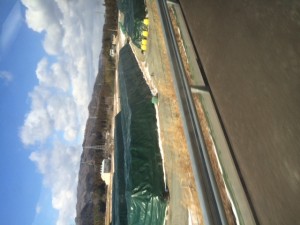
It’s a little hard to tell here, but what they are are bags filled with contaminated soil—and let me tell you, they are everywhere. They cover them with tarps to keep the radiation from leaking out, but otherwise, there are just these bags filled with radioactive material, wherever you look. The picture can’t really do it justice.
Some may be wondering why they’re still there. Some people have suggested moving the bags to permanent, more solid homes, however a lot of people are against that, as building those buildings would basically be admitting that all that radioactive waste will never leave this area. While there have been talks about what to do with it, unsurprisingly, no one wants it in their town. It’s mostly topsoil and the top layer off of the roads.
The next thing we saw was equally grim—a once-residential area that was completely demolished by the tsunami. The tsunami caused considerably more damage than the earthquake itself. It’s hard to believe what was once here in this open field.
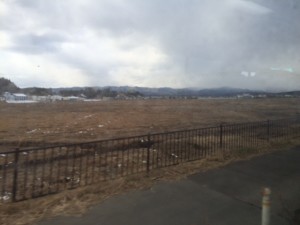
Even now, five years later, there is nothing there. A little later on, we went to another part of town that was washed away by the tsunami. Here are two pictures that show some remains—one the foundations of a house and one a mostly ruined house.


This sign on the ground reads (to the best of my knowledge) “do not proceed”.
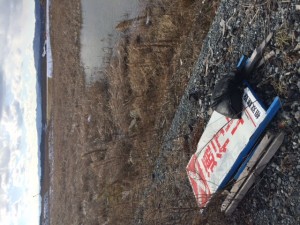
However, the professor was talking about how the people from this area get sad when others use the term “ghost town”. At first, I had to admit I wondered why, as it actually seemed to be one. One of the spookier things were the abandoned houses that always had the radio on, even after five years of no one living there, to scare off animals (especially, apparently, monkeys). However, I took this picture from only a slightly different angle. In fact, you can still see the sign on the ground.
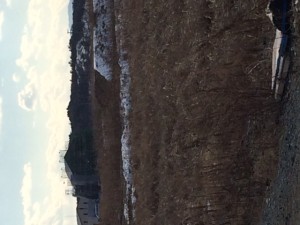
That’s someone rebuilding a house. It’s a little off in the distance, but another house is going up. I couldn’t say I say a lot of that in our time around Fukushima, but if anything gave me hope, it was this. People were trying to rebuild. Perhaps it was taking longer than they thought, but things were going up again.
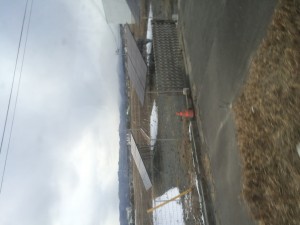
That was another thing I was surprised to see around Fukushima—(inexplicably sideways) solar panels. At first I thought they must have been something to measure radiation, but they actually were solar panels. I suppose I sort of assumed that everything in Fukushima was nuclear, which is a pretty bad assumption in retrospect. There was a lot more there, even energy-wise, than just the nuclear plant. We talked a lot in class about Japan’s energy future. As a country with little to no coal, natural gas, or oil, nuclear seemed to be a good option, as it was more reliable than wind or solar (which depend on weather). But is a country with 10% of the world’s earthquakes plus tsunami potential really a good match for nuclear? It also seems a lot of Japan’s public was against nuclear for a long time—understandable, considering the events in Hiroshima and Nagasaki. One of our texts, an essay by Daniel P Aldric, described Japan as having a “nuclear allergy” (Japan at Nature’s Edge, Postcrisis Japanese Nuclear Policy).
However, life is going on. A little while off in the town of Minami Soma, we went to eat and do a little shopping. Here are the fresh flowers in their window.
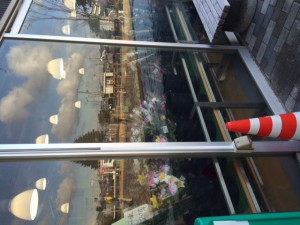
There we also visited their nuclear measurement center. They took measurement of air to test for radiation. They have performed tens of thousands of tests while the government, they said, performed only eight, a slightly scary thought. Here are some of their maps (showing where radiation is most high over several years in Minami Soma and another close city) and some of their measuring machines.
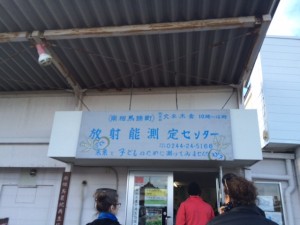
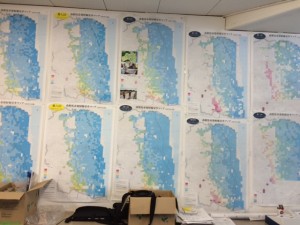
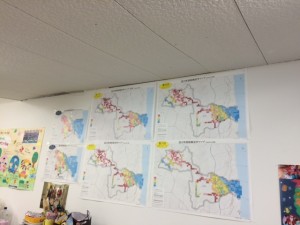

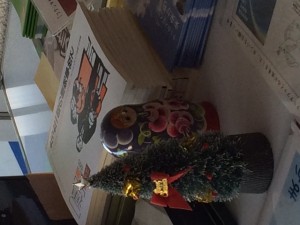
You might notice that last picture includes a Russian nesting doll. This place had strong ties to environmentalists who studied Chernobyl. In fact, they gave them a lot of the equipment.
We ended our day at Fukushima University’s FURE, which is FUkushima FUture Center for REgional REvitalization, where we had dinner and another talk with the professor. Most of us were rather overwhelmed to say the least. Obviously, there is no easy answer to any of the questions about what to do.
As we came back to ARI for the night, I thought a lot about what this trip meant. It was certainly one of the most impactful things I’ve done in my life. Very few people have been to Fukushima who weren’t living or working there after the accident occurred. However, perhaps it is true that that worst times bring out our best. Working with the FURE professor and seeing the efforts to do something, I left feeling a little hopeful. While I can’t speak for everyone on the trip, I think we really did see some amazing things mixed in with some frightening ones. It was certainly unlike anything I have ever experienced.
Even as I write this, I feel motivated to do something. I’m not an environmental studies major (in fact, this is the first ES class I’ve taken), but there were things here that will stick with me long after I’m home from Japan.
It was a long day, packed with events, tiring for everyone involved, physically and emotionally. But to end it on a light note and finish the description of the entire day, this is what happened when we returned. As I got off the bus, I went by to say good night to my two little friends.
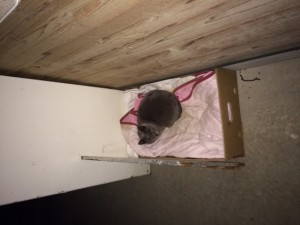
Actually, it appears it was just one little friend (who may have just been a little confused I came to take pictures of her at 9:00 pm!). One-eyed Meme was off somewhere, obviously less tired than the rest of us!
However Foodlife starts early tomorrow for all of us (except the cats), so I had to be off to bed. We really are getting down to the last few days now, which is hard to believe.

Recent Comments